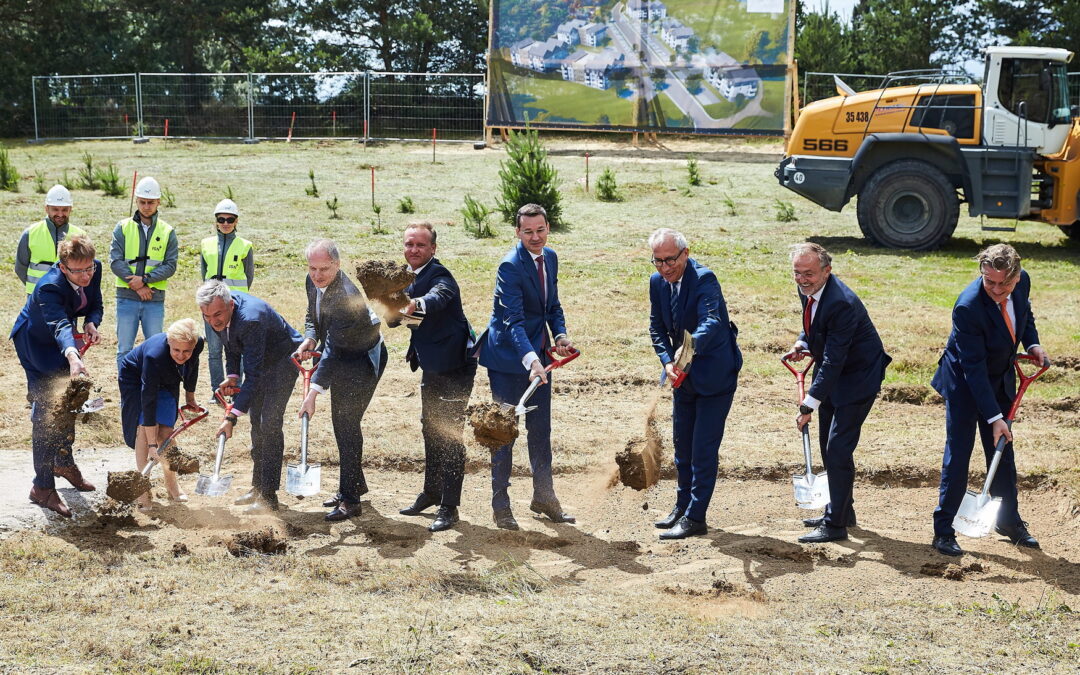By Anna Pommersbach (published in cooperation with the Jagiellonian Club think tank)
A new report by the Supreme Audit Office (NIK) on the government’s “Home Plus” programme shows that housing conditions have not improved and the housing shortage has not been adequately addressed. Of the planned 100,000 new homes by the end of 2019, only 15% have been built.
Prices of homes in Poland have been rising steadily for several years, with an increase of over 31% between 2015 and 2020. Banks increased mortgage requirements in 2020, with a higher own contribution now needed and higher loan margins. The credit score of the average Pole has dropped by 30% as a result.
At the same time, for years we have been facing a housing shortage. The authors of a PwC report published in December 2021 estimate that Poland has a deficit of 2.2 million homes.
Meanwhile, a report by the Supreme Audit Office (NIK) from last month found that “in the last eight years, the proportion of homes catering to the needs of people with average and low earnings comprised just 2.5% of new housing stock”.
The government’s Home Plus programme, launched in 2016, was supposed to address these problems. As the NIK report states:
In the market section, it undertook to create conditions for the implementation of housing investments to enable people with a moderate income to rent a flat or rent with a view to ownership of the flat. This solution was designated for people who do not have a credit score and the possibility of applying for subsidised social/government housing.
“The social section of the Home Plus programme undertook to increase initiatives to satisfy the housing needs of people with average and the lowest earnings,” the report continues.
Realizacja programu Mieszkanie Plus nie przyniosła oczekiwanych efektów. Rząd deklarował budowę 100 tys. mieszkań do końca 2019 r. Do użytku oddano jedynie 15 tys. mieszkań, a 20,5 tys. znajdowało się w budowie – i to wszystko dopiero pod koniec 2021 r.https://t.co/3RH5KnenSA pic.twitter.com/WFpoIKOwit
— Najwyższa Izba Kontroli (NIK) (@NIKgovPL) March 23, 2022
It is important to stress that the financial support for housing from the state budget is in fact falling rather than increasing: it was 2.1 billion zloty (€453 million) in 2018, but just 1.2 billion zloty (€259 million) a year later. This is around 0.08% of the GDP (compared to an EU average of 0.5%).
Of the expected 100,000 new homes by the end of 2019, only 15% have come to fruition. Another 20,500 were being built according to data from the end of October 2021.
As part of the plan to eliminate the queue for social housing, the programme aimed to make 13,500 homes available every year. How has this looked in practice? This number has been achieved but as a total figure for the entire 2016–2021 period.
The National Property Resource (KZN), the entity that was supposed to facilitate and streamline implementation of the scheme by acquiring and adapting state treasury land for housing investments, has not managed to fulfil its obligations.
This is because the relevant minister delayed the decision to appoint the KZN’s president and advisory council, meaning that the organisation functioned without them for more than two years.
The KZN has managed to gather 55% of the property planned for this period. For almost three years, it did not make any real estate available for construction of flats and did not ensure the necessary technical preparation of land.
The first transfer agreement was signed in mid-2020. Yet only at the end of the same year were legislative changes on social housing introduced, along with laws creating the basis for the implementation of housing investments by local authorities and the KZN as well as laws making it easier for investors to obtain real estate.
The original Polish version of this article can be found here. Translated by Ben Koschalka
Main image credit: Jan Rusek / Agencja Gazeta





















